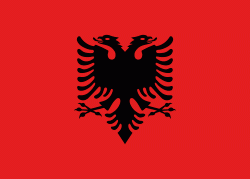Kamëz (Bashkia Kamëz)
Kamëz (Kamza) is a municipality in Tirana County, Albania. It was formed at the 2015 local government reform by the merger of the former municipalities Kamëz and Paskuqan, that became municipal units. The seat of the municipality is the town Kamëz. The total population is 104,190 (2011 census), in a total area of 37.20 km2. The population of the former municipality at the 2011 census was 66,841.
Kamëz was one of the applicants for the 2019 European Green Capital Awards, which was won by Oslo.
Prior to the 1990s, Kamëz was a sparsely populated and predominantly agricultural area. Following the post 1990s Albanian population movements, the area experienced massive influxes of inhabitants from all over Albania. The newly formed city is known to bear impressive street names belonging to international personalities, capital cities, and organizations.
Kamëz was one of the applicants for the 2019 European Green Capital Awards, which was won by Oslo.
Prior to the 1990s, Kamëz was a sparsely populated and predominantly agricultural area. Following the post 1990s Albanian population movements, the area experienced massive influxes of inhabitants from all over Albania. The newly formed city is known to bear impressive street names belonging to international personalities, capital cities, and organizations.
Map - Kamëz (Bashkia Kamëz)
Map
Country - Albania
 |
 |
| Flag of Albania | |
Albania has been inhabited by different civilisations over time, such as the Illyrians, Thracians, Ancient Greeks, Romans, Byzantines, Venetians, and Ottomans. The Albanians established the autonomous Principality of Arbër in the 12th century. The Kingdom of Albania and Principality of Albania formed between the 13th and 14th centuries. Prior to the Ottoman conquest of Albania in the 15th century, the Albanian resistance to Ottoman expansion into Europe led by Skanderbeg won them acclaim over most of Europe. Albania remained under Ottoman rule for nearly five centuries, during which many Albanians (known as Arnauts) attained high-ranking offices in the empire, especially in the Southern Balkans and Egypt. Between the 18th and 19th centuries, cultural developments, widely attributed to Albanians having gathered both spiritual and intellectual strength, conclusively led to the Albanian Renaissance. After the defeat of the Ottomans in the Balkan Wars, the modern nation state of Albania declared independence in 1912. In the 20th century, the Kingdom of Albania was invaded by Italy, which formed Greater Albania before becoming a protectorate of Nazi Germany. Enver Hoxha formed the People's Socialist Republic of Albania after World War II, modeled under the terms of Hoxhaism. The Revolutions of 1991 concluded the fall of communism in Albania and eventually the establishment of the current Republic of Albania.
Currency / Language
| ISO | Currency | Symbol | Significant figures |
|---|---|---|---|
| ALL | Albanian lek | L | 2 |
| ISO | Language |
|---|---|
| SQ | Albanian language |
| EL | Greek language |















